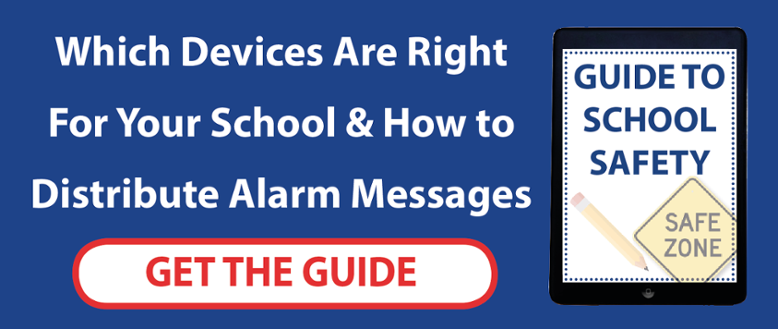
A panic alarm is a means for workers to notify their colleagues of an emergency in an almost instant fashion. Typically, these are found in highly hazardous workspaces such as chemical plants or manufacturing businesses where seconds can mean the difference between life and death. However, against a backdrop of rising levels of classroom violence and accidents in recent years, many administrators in the education sector have been looking to other industries for solutions to their health and safety problems.
Panic alarms can often prove to be one of the most basic and effective methods of triggering an emergency response, with many schools already having them in place in a rudimentary fashion. But how can we use modern technology to provide a better level of protection for staff and students alike, whilst still keeping the panic alarm concept as simple to execute as possible?
A panic alarm is most often needed in situations where there is a high degree of threat to the personal safety of staff or danger to students (usually through classroom violence or a serious accident). This necessitates that action has to be taken quickly in order to prevent an emergency from spiralling out of control. As discussed earlier, most schools already have a basic form of panic alarm in place in the form of a generalised alarm bell which can be used for everything from fire drills to signalling the end of lessons and breaks.
If an emergency takes place, some institutions will have a coded alert that can be sounded to staff via the bell. But this doesn't provide anywhere near the level of information needed for responders to quickly and effectively deal with an emergency, a generalised warning bell can instead add to the confusion by triggering an evacuation of the school in case of fire or impairing staff's ability to communicate.
Automation can sidestep this problem by linking all staff members together via a centralised system. Known as a critical alarm management system, this computer upgrade to the existing emergency infrastructure of the school receives alarm notifications as they are raised and then sends out notifications automatically. The system can be configured in a variety of ways in order to meet the specific needs of the school in question. The system takes the need for human oversight out of the equation, massively decreasing the amount of time it takes to mount a response to an emergency.
Depending on the nature of the emergency, once an alarm is triggered, notifications are then sent to the mobile devices of the appropriate staff (e.g. trained first aiders or special needs teachers) telling them to assist - if they do not acknowledge receipt of these messages, then the alarm can be escalated to senior managers to ensure the problem is properly dealt with. This all takes place in seconds, saving precious time when lives may be in danger and eliminating the chance of miscommunication.
The way in which the critical alarm management system is able to communicate with staff so effectively is because all notifications are routed through a shared app that all employees can have installed on their personal smart devices. This app functions as a means by which they can raise alarms on the critical alarm management system and then add more information or view updates. Other staff can also look at alarms on the system for more information on a given situation and then add their own updates if necessary.
As all communications are routed primarily via the app, it is easy for senior leaders to ensure that teachers' actions are well coordinated in an emergency. Additionally, notifications and case-specific instructions can be pre-configured for sending so that senior staff can send out certain messages quickly when a high-priority alarm is raised. Thus, time spent organising staff is cut even further, speeding up response times to sudden crises and making sure that nobody is left out of the loop.
However, whilst using a smartphone to raise an alarm via the app is fast, it’s also possible to trigger alerts using dedicated lone worker devices. These wearable devices are referred to as MPERS (mobile personal emergency response devices) and can be kept on a teacher's person at all times and have a single function - to notify the critical alarm management system that a serious emergency has occurred that requires the assistance of other staff members. In this respect, these devices operate in a manner very similar to a traditional panic button, though instead of being static, they can be carried around the classroom for instant use if needed.
This makes them ideal for use in situations where a teacher is unlikely to be able to leave the classroom to summon help, such as when working with children with special educational needs or when dealing with potentially violent pupils. Alongside MPERS, there are also a range of toughened smart phones with dedicated panic buttons that can be issued to support and maintenance staff, which can automatically raise high priority alarms in the event of an accident occurring (such as a fall or entry into a restricted area of the grounds), lessening the time between an accident occurring and help arriving.
Managing health and safety in schools can often be a difficult task for administrators and educators alike, but by using modern technology to tackle vulnerabilities and capability gaps head-on, we can eliminate a large proportion of the associated risk. The software and devices provided by ANT are tailor made to deal with virtually any set of requirements and draw on years of experience in multiple industries to ensure the products work as efficiently as possible. This efficiency even extends to installation, where common sense design and planning means that staff won’t require extensive training to get the systems up and running. This enables teachers to easily use their new health and safety systems without having to take time away from teaching to make sure their students are protected.





